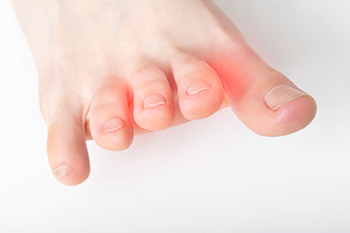
Patients who have peripheral arterial disease (PAD) often experience poor circulation. They may have cold feet or hands, the skin on the feet may become cracked, and the toenails may become brittle. Additionally, patients who smoke may be at risk of poor circulation. Improving eating habits may also help to control this condition. People who have diabetes and elevated blood pressure or cholesterol levels may be prone to developing poor circulation. Many diabetic patients have implemented coping tactics that may help to relieve some of the symptoms. These may consist of having the feet examined regularly, which will include a test for poor circulation. Additionally, performing a gentle exercise routine may help to improve poor circulation. Controlling blood pressure and cholesterol levels may benefit heart function, improving circulation. If you notice signs of poor circulation in your feet, it is suggested that you consult with a podiatrist who can help you to manage this condition.
Poor circulation is a serious condition and needs immediate medical attention. If you have any concerns with poor circulation in your feet contact one of our podiatrists of Lewis Wolstein, DPM, P.C. & Associates. Our doctors will treat your foot and ankle needs.
Poor Circulation in the Feet
Poor blood circulation in the feet and legs is can be caused by peripheral artery disease (PAD), which is the result of a buildup of plaque in the arteries.
Plaque buildup or atherosclerosis results from excess calcium and cholesterol in the bloodstream. This can restrict the amount of blood which can flow through the arteries. Poor blood circulation in the feet and legs are sometimes caused by inflammation in the blood vessels, known as vasculitis.
Causes
Lack of oxygen and oxygen from poor blood circulation restricts muscle growth and development. It can also cause:
- Muscle pain, stiffness, or weakness
- Numbness or cramping in the legs
- Skin discoloration
- Slower nail & hair growth
- Erectile dysfunction
Those who have diabetes or smoke are at greatest risk for poor circulation, as are those who are over 50. If you have poor circulation in the feet and legs it may be caused by PAD and is important to make changes to your lifestyle in order to reduce risk of getting a heart attack or stroke. Exercise and maintaining a healthy lifestyle will dramatically improve conditions.
As always, see a podiatrist as he or she will assist in finding a regimen that suits you. A podiatrist can also prescribe you any needed medication.
If you have any questions please feel free to contact our office located in Co-Op City, NY . We offer the newest diagnostic and treatment technologies for all your foot and ankle needs.



